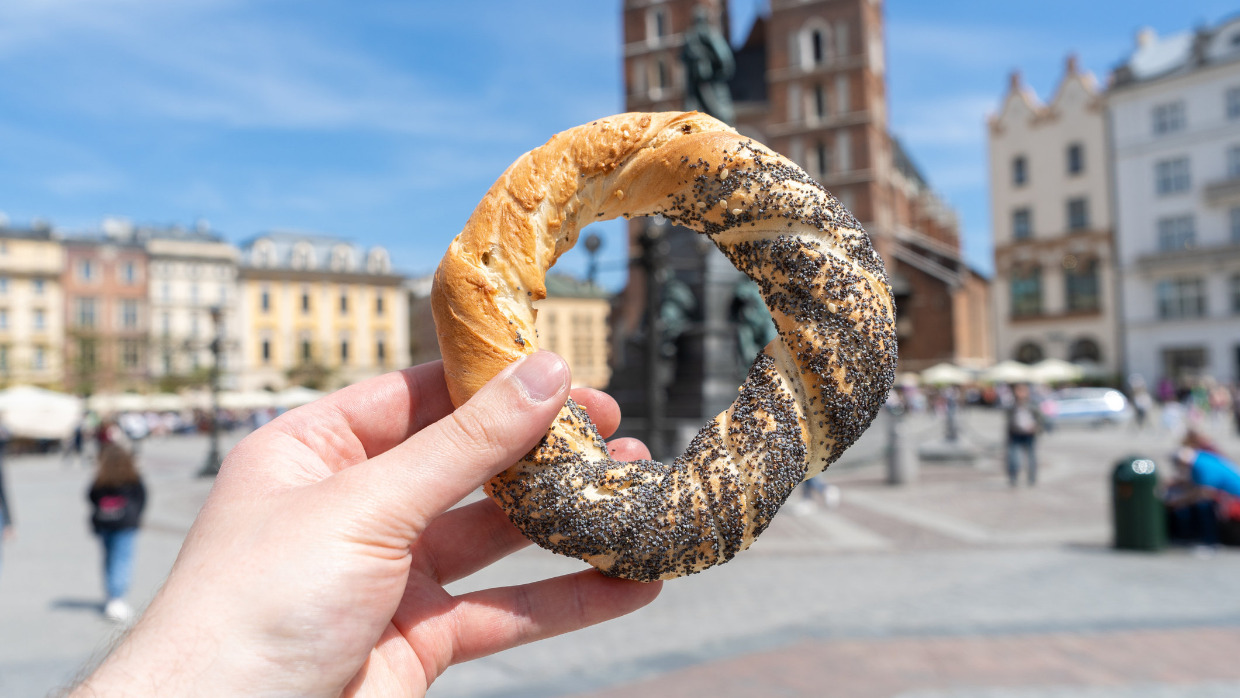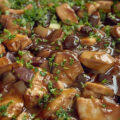The great horrors of the 20th century that took place in Poland are usually the first things we think of when talking about the Jews of Poland. However, to do this is a disservice to the thousands of years of prosperity and success Eastern European Jews in Poland enjoyed.
Polish Jewish cuisine is a unique culinary tradition that has been shaped by centuries of the Jewish people's experiences in Poland.
In this article, we will take a look behind the (iron) curtain at the history of Polish Jews and their one-of-a-kind cuisine. We'll explore some of the iconic dishes that have come to define Polish Jewry and learn the stories behind them.
A Brief History of Polish Jews
Jews have been living in Poland since around the 10th century, and over the years, they have formed a significant part of the country's cultural and religious landscape. At their peak, there were over 3 million Jews living in Poland - the largest Jewish community in the world at the time.
Before the rampant anti-semitism and pogroms throughout the 19th and 20th centuries, Poland was one of the best places to live as a Jew due to its religious tolerance, which allowed Polish Jews to develop a close-knit community and practice Judaism freely.
This unique sense of closeness helped create some of the most iconic dishes in Jewish cuisine. It's what gives Polish Jewish food such a soul-food, homely quality that's hard to explain without biting into. So let's get right into the meat and potatoes (of which there are a lot in Polish Jewish cuisine).
These stews, pickled fish dishes, and soups were created to deal with the difficult political and environmental conditions in these areas. Jews who had been expelled from Germany, France, and Italy moved eastward to Poland and Russia, where Byzantine Jews had long since made their homes. They traveled throughout Eastern Europe and Russia, bringing with them a number of foods that originated in Germany, like challah bread and gefilte fish, and acquiring new tastes and customs.
Iconic Dishes of Polish Jewish Cuisine
Many of the dishes that define this culinary tradition are hearty and comforting, perfect for the cold winters that are common in Poland. Take cholent for instance - a slow-cooked stew made with beef, potatoes, and beans. Cholent is typically cooked overnight, ensuring that it is ready for the Sabbath meal on Saturday afternoon. Often served with kishke, piping hot beef intestine stuffed with matzo meal, schmaltz, and spices.
Probably the most notorious Jewish dish - gefilte fish, a sweet and savory fish dish that is usually served cold. Gefilte fish is made by grinding fish, mixing it with matzo meal and eggs, and then forming it into small patties that are poached in a flavorful broth. Some love it, some hate it but its unique texture and flavor make it a dish you need to try (fresh and not out of a jar) at least once.
The first recipe for gefilte fish was written about 700 years ago in a non-Jewish German cookbook. The dish was titled “gefuelten hechden” (stuffed pike) and was ground, poached, then stuffed into the skin of the fish from whence it came and roasted.
It was originally served as a Catholic dish for Lent. At some point during the Middle Ages, the dish was adopted by German and Eastern European Jews under the name “gefilte.” Each Jewish community developed its own version of the dish, with some parts of Poland making it sweet with beets, while in other areas, pepper was used for seasoning.
What makes Jewish Polish cuisine different from most of the other food enjoyed in Poland is the Jews brilliant use of spices such as nutmeg, vanilla, and orange rind to create unique flavors in their dishes.
View this post on Instagram
This blend of spices can be seen in the little-known Jewish staple gęsi pipek (use google translate), a dish of baked goose neck stuffed with meat and potatoes, and onions and served with apples and sauerkraut. Gesi Pipek is still often served in Poland by restaurants that specialize in Jewish cuisine.
While the Jewish people in Poland experienced times of prosperity, for the most part, they kept to small villages with modest jobs. They had to be frugal and resourceful to survive, so they made sure every part of the animal and every inch of the vegetable was used in dishes.
When making Gesi Pipek, for instance, the leftover goose fat would go a long way in the Jewish kitchen. With the leftover goose carcass used to make a flavorful broth or gravy.
Polish Jewish Treats
One of the great Polish delicacies that we still enjoy today is the famous bagel. The circular treat traditionally smeared with cream cheese and covered in lox is one of those pairings that make your mouth water just imagining. Originally titled Obwarzaneks, the round doughy baked goods became popular amongst Jews.
The bagel was usually given to women during childbirth due to its ring shape. The unique shape of the bagel - with no beginning and no end ‑ symbolizes the eternal circle of life and makes it possible to be held up on large poles and sold by the dozen.
The bagel's cousin, the Bialy (my personal favorite Polish dish), can also trace its origins to Poland. Born in the city of Lublin, the region of Bialystock, Cebularz (‘cebula’ means onion in Polish) is a wheat bun covered in caramelized onions and poppy seeds and has become a favorite for Jews around the world.
Polish Jews were also big snackers, and one of their favorite small bites was tiny pickled fish such as Herring and Smelt. Smelt were cooked in beer and vinegar, with the addition of butter, salt, sugar, and spices.
Poland 2023
I could go on and on about the delicacies Polish Jews prepared with classic dishes like Matzo Ball Soup, kugel, or tzimmes. It goes to show how rich and full the lives Jews created for themselves were in Poland and makes the Holocaust even more tragic in hindsight.
But even in a Poland bereft of Jews, the lasting influence of Jewish Polish cuisine is impossible to ignore. You can’t walk past a street in Poland without seeing bagels on a stick or pickled herrings sold from a stand. The Jewish legacy in Poland is one we should remember and recognize for its impact on Jewish life all around the world. So try out a dish or two and take a trip to the past to feel what it was like to be a Jew in Poland.

















